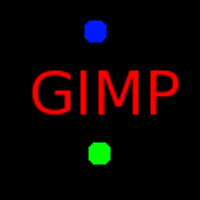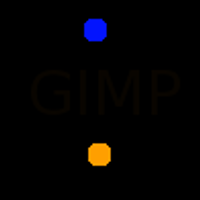| 5.12. Rodymo filtrai | ||
|---|---|---|

|
5. Meniu „Rodymas“ |  |
This command shows a dialog window when executed. This window can be used to manage the display filters and their options. Display filters are not to be confused with the filters in the -menu. Display filters do not alter the image data, but only one display of it. You can imagine display filters like big panes before your screen. They change your perception of the image. This can be useful for things like soft-proofing prints, controlling the color management but also simulation of color deficient vision.
This dialog has two small selectboxes. The left selectbox displays the Available Filters. You can move a filter to the right selectbox by selecting it and clicking on the button. The Active Filters window on the right displays filters you have chosen and which will be applied if the adjacent box is checked. You can move filters from the right selectbox to the left selectbox by using the button. If you select a filter by clicking on its name, its options are displayed below the two selectboxes.
Simulation of deficient vision (Skyrius 5.12.5, „Regėjimas su spalvų deficitu“; Skyrius 5.12.6, „Kontrastas“)
Digital photography helper (Skyrius 5.12.4, „Clip Warning“)
Others (Skyrius 5.12.7, „Spalva“)
ACES (Academy Color Encoding Specification) is a specification that defines a color encoding system created to standardize how color is managed to create an accurate color workflow. Within that standard, a RRT (Reference Rendering Transform) converts the colors from the ACES color space to the used color space in your image.
This filter allows to visualize underexposed and overexposed areas of a photo with user-configurable colors. For now, it’s mostly geared towards images where colors are stored with floating point precision. You will mostly benefit from this, if you work on 16-/32-bit per channel float images such as EXR and TIFF.
Enable visualization for underexposed pixels (less than 0 in 32-bit float mode).
User-configurable color that will be used to fill underexposed pixels.
Enable visualization for overexposed pixels (more than 1 in 32-bit float mode).
User-configurable color that will be used to fill overexposed pixels.
Enable visualization for not-a-number (NaN) pixels, only visible when there is a division by zero error and suchlike.
User-configurable color that will be used to fill NaN pixels.
When enabled, include the alpha component in the warning.
When enabled, include fully transparent pixels in the warning.
The images you create, we hope, will be seen by many people on many different systems. The image which looks so wonderful on your screen may look somewhat different to people with sight deficiencies or on a screen with different settings from yours. Some information might not even be visible.
Šiame žemyn išskleidžiamame sąraše galite pasirinkti iš:
Protanopia is a visual deficiency of the color red. It's the well-known daltonism (red-green color blindness). Daltonism occurs fairly frequently in the population.
Iš tikro protanopija yra sudėtingesnė, nei tai; asmuo, turintis šią problemą, negali matyti raudonos arba žalios, nors jis tebėra jautrus geltonai ir mėlynai. Be to, jis nesuvokia skaisčio ir atspalviai pasislenka link trumpų bangų ilgių.
Asmuo su deuteranopija turi žalių spalvų regėjimo deficitą. Iš tikro deuteranopija yra panaši į protanopiją, kadangi asmuo nematos raudonos ir žalios spalvos, tačiau neturi škaisčio regėjimo arba atspalvių pasislinkimo sutrikimų.
Asmuo su tritanopija nesuvokia mėlynos ir geltonos spalvų, tačiau jis tebėra jautrus raudonai ir žaliai. Jo škaisčio suvokimas yra šiek tiek sumažėjęs, o atspalviai yra pasislinkę link ilgų bangų ilgių.
Pav. 16.47. Example of protanopia

Original image

A red-blind person cannot see the red (255,0,0) text on a black (0,0,0) background.
Pav. 16.48. Trijų regėjimo deficitų tipų pavyzdžiai viename paveikslėlyje

Normal vision

Protanopia

Deuteranopia; in deuteranopia, yellow is shifted toward red.

Tritanopia; in tritanopia, green is slightly represented in the blue range.
Jeigu jus domina ši tema, žiniatinklyje galite paieškoti „jautrumo kontrastui“.
If you are interested in this subject, you can browse the Web for „contrast sensitivity“.
Naudodami filtrą „Kontrastas“ galite matyti paveikslėlį taip lyg turėtumėte kataraktą. Jums gali reikėti padidinti kontrastą, kad jūsų senelė gerai matytų jūsų paveikslėlį. Daugeliu atvejų aktualios yra tik labai mažos parametro Kontrasto ciklai reikšmės. Naudojant didesnes reikšmes gaunamas pašalinis poveikis, kuris čia mūsų nedomina: jeigu padidinsite škaisčio reikšmę virš 255, atsiras papildomų spalvų.
Atitikimas tarp elektrinio intensyvumo ir spalvos šviesumo nėra tikslus ir jis priklauso nuo įrenginio (fotoaparato, skenerio, vaizduoklio, ir t. t.). „Gamma“ – tai koeficientas, naudojamas pataisyti šį atitikimą. Jūsų paveikslėlis turi būti matomas ir tamsiose ir šviesiose srityse, netgi jeigu jis rodomas vaizduoklyje, su per dideliu arba nepakankamu skaisčiu. „Gamma“ rodymo filtras jums leidžia suprasti kaip jūsų paveikslėlis atrodytų esant šioms sąlygoms.
![[Patarimas]](images/tip.png)
|
Patarimas |
|---|---|
|
In case you want not only to change the gamma of the current display, but the change the gamma within the image itself, you can find a description in Skyrius 8.10, „Levels“. |